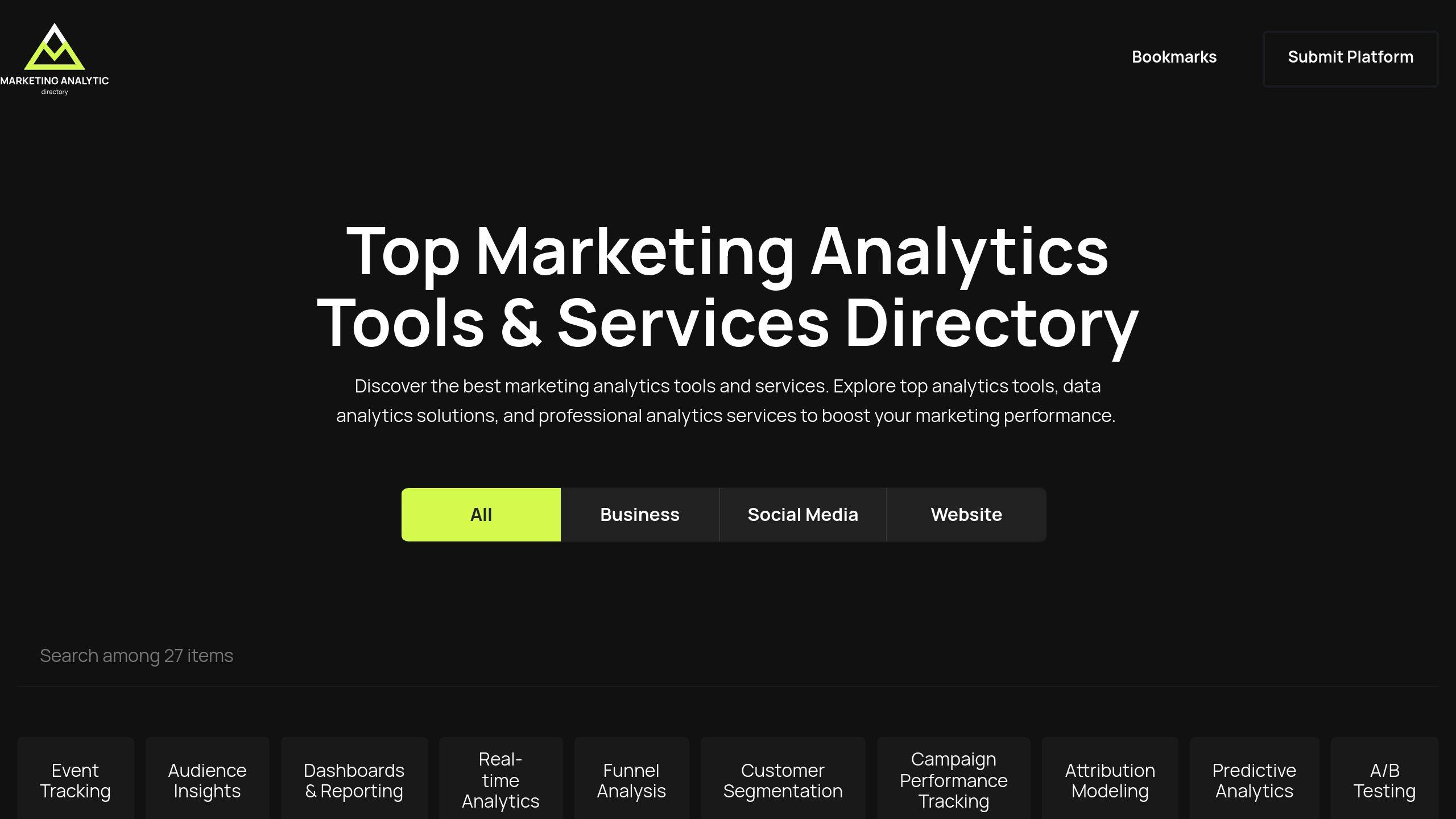Cloud-native integration is transforming marketing automation by making it faster, more efficient, and cost-effective. Here's how it helps:
- Save Costs: No need for expensive hardware - use pay-as-you-go cloud services that scale with your campaigns.
- Simplify Workflows: Connect tools and automate repetitive tasks with pre-built APIs and microservices, reducing technical headaches.
- Engage Customers Better: Process real-time data for personalized recommendations and faster responses to customer needs.
To get started:
- Choose a cloud-native platform with strong API support, scalability, and security.
- Use AI tools for smarter decisions, like audience segmentation and campaign optimization.
- Prioritize data security and compliance with regulations like GDPR.
Cloud-native integration isn't just a tech upgrade - it's a way to enhance your marketing operations, launch campaigns faster, and stay competitive in a fast-moving market.
Cloud Native Enterprise Marketing Platform
Advantages of Cloud-Native Integration in Marketing Automation
Cloud-native integration is changing the way marketing teams operate, making processes smoother and improving customer interactions. Here's how it benefits modern marketing efforts.
Cost Savings and Scalability
Switching from on-premise systems to cloud-native solutions cuts costs by eliminating the need for expensive hardware. Instead, businesses can use flexible, pay-as-you-go cloud services [1] [2]. These systems automatically scale resources based on campaign demands, helping teams manage costs while maintaining performance during busy periods. This setup also allows marketing teams to adapt quickly to market trends and roll out new campaigns without needing extra infrastructure.
Simplified Workflows
Cloud-native integration improves workflow efficiency by connecting tools and automating repetitive tasks. Pre-built components, like those found in Azure's API Management (APIM) and Data Factory, make complex integration tasks much easier [2]. This allows marketing teams to focus on strategy rather than spending time on technical issues.
The use of microservices architecture adds another layer of reliability. If a problem arises, it can be resolved without disrupting the entire system [1]. This ensures campaigns run smoothly, even when technical hiccups occur.
Improved Customer Engagement
Real-time data processing is a game-changer for customer engagement. Cloud-native platforms can analyze data instantly, enabling personalized recommendations, audience segmentation, and seamless interactions across different touchpoints [3].
This ability to act on customer data in real-time creates more meaningful interactions and boosts customer satisfaction [3]. Businesses can respond faster to customer needs and market shifts, giving them a competitive edge in today’s fast-moving marketing world.
To make the most of these benefits, choosing the right platform and using automation strategically are key.
Steps to Use Cloud-Native Integration in Marketing Automation
Selecting a Cloud-Native Platform
Picking the right cloud-native platform is key to effective marketing automation. You’ll want a platform with user-friendly tools, centralized data handling, and a flexible setup. For instance, Boomi offers a platform designed to handle even the most complicated marketing workflows [4]. When exploring your options, focus on platforms that:
- Work smoothly with your existing tools
- Scale easily as your campaigns grow
- Include pre-built connectors for faster deployment
- Uphold strong security measures
- Offer flexible, usage-based pricing plans
Using AI and Automation
After choosing your platform, make the most of its AI features to boost automation. AI-enabled platforms can take your marketing to the next level with smarter decisions and predictive analytics, helping you target customers more effectively. These tools can:
- Analyze customer behavior to fine-tune segmentation
- Improve timing and delivery for your campaigns
- Adjust strategies based on real-time performance insights
Start with basic tasks like email segmentation and lead scoring. Once your team gets comfortable, you can move on to more advanced automation workflows.
Protecting Data and Meeting Regulations
While automation offers great advantages, keeping customer data secure and staying compliant with regulations is just as important. Protecting data not only builds trust but also ensures your campaigns are compliant with legal standards.
Here’s how to safeguard your data:
- Encrypt and Control Access: Use encryption for data in transit and at rest, and limit access through role-based controls.
- Stay Compliant: Meet GDPR and other regulations by anonymizing data, managing consent properly, and conducting regular privacy checks.
- Regular Security Checks: Perform routine security reviews, monitor access logs, and test disaster recovery plans to address vulnerabilities proactively.
sbb-itb-5174ba0
Examples and Tips for Cloud-Native Marketing Automation
After setting up cloud-native integration, learning from real-world examples and applying practical tips can help you get the most out of it.
Case Study: Cloud-Native Integration in Action
A great example of cloud-native integration is Netflix. They use microservices to deliver personalized content and roll out features quickly. Here’s what their system allows:
- Real-time personalization: Tailored recommendations based on what users watch.
- Quick feature deployment: Fast rollout of new marketing campaigns and updates.
- Smooth service integration: Consistent data flow across all platforms.
Tips for Success
Want to make the most of cloud-native marketing automation? These strategies can help:
Use CI/CD Pipelines
Automate testing and deployment with CI/CD pipelines. This helps you launch campaigns faster and adjust to market shifts with ease.
Empower Teams with Self-Service Tools
Give your marketing teams the freedom to work independently using self-service automation tools. This cuts down reliance on IT, speeds up campaign execution, and boosts flexibility.
Plan for Scalability
When building cloud-native marketing systems, keep scalability in mind:
- Opt for platforms that scale automatically.
- Explore flexible cloud options, whether public or private.
- Ensure your architecture can easily integrate with new tools.
With these approaches, you're better equipped to choose tools that align with your cloud-native marketing goals.
Finding Tools for Cloud-Native Integration
Picking the right tools for cloud-native marketing automation can feel like a daunting task. The Marketing Analytics Tools Directory makes it easier by offering a categorized resource to compare and evaluate solutions. Its focus on cloud-native compatibility ensures that tools can fit smoothly into your existing workflows.
Marketing Analytics Tools Directory

This directory is a go-to platform for discovering and comparing tools that work well with cloud-native marketing systems. It organizes solutions based on specific needs and use cases, helping you quickly find tools that match your marketing goals.
Here’s a quick look at the categories and tools available:
| Category | Available Tools |
|---|---|
| Real-time Analytics & Integration | Campaign tracking, audience monitoring, ETL tools, API connectors |
| Business Intelligence | Reporting dashboards, predictive analytics |
| Marketing Automation | CRM integration, workflow automation |
| Compliance & Security | Data protection, regulatory compliance tools |
When exploring the directory, keep these key factors in mind:
- Tool Integration: Look for tools with built-in cloud compatibility, strong API support, and pre-built connectors. These features simplify deployment and reduce setup time.
- Scalability: Consider tools that can handle increasing data volumes and complex workflows. The directory’s filters can help you find scalable options that match your business growth.
Here’s a real-world example: A mid-sized e-commerce business needed to revamp its marketing stack. Using the directory, they identified tools with pre-built connectors for Shopify and Google Ads. This enabled real-time customer segmentation and cut their tool evaluation process from months to just weeks.
The directory also offers insights into pricing, user reviews, and technical details, helping you build a cloud-native marketing setup that works for your business.
Conclusion: Improving Marketing with Cloud-Native Integration
Cloud-native integration is reshaping how businesses approach marketing automation, offering new ways to streamline operations and scale effectively.
Switching to cloud-native integration brings three key benefits to marketing automation:
- Improved Efficiency: These integrations help businesses allocate resources better, allowing seamless scaling across public, private, or hybrid cloud setups without driving up costs. This enables marketing teams to adjust swiftly to campaign demands.
- Faster Campaign Launches: Cloud-native tools speed up feature deployment, giving marketers the ability to respond quickly to customer needs. This agility helps teams launch campaigns faster and refine strategies as they go.
- Smarter Decisions with Data: Real-time data integration allows marketers to make informed choices on the fly, staying ahead of trends and improving how campaigns are optimized and customers are engaged.
To successfully adopt cloud-native marketing automation, businesses need to carefully choose tools and plan their implementation. The Marketing Analytics Tools Directory is a helpful guide for finding cloud-native solutions tailored to specific marketing goals.
| Focus Area | Key Factors to Consider |
|---|---|
| Platform Selection | Cloud compatibility, API support, scalability |
| Data Management | Real-time processing, security compliance |
| Integration Capability | Pre-built connectors, workflow automation |
| Analytics Features | Campaign tracking, audience monitoring |
The future of marketing automation depends on integrating cloud-native technologies seamlessly. Prioritizing security, compliance, and scalability ensures businesses can create systems that not only support growth but also enhance customer connections.
Keep in mind, adopting cloud-native integration is a continuous process. Regularly reviewing and improving your marketing automation workflows will help you stay competitive and deliver outstanding customer experiences in a dynamic digital world.
For more insights into cloud-native marketing automation, check out the FAQs below.
FAQs
Here are answers to some common questions about cloud-native integration to help clarify its advantages and how it works.
What is cloud-native automation?
Cloud-native automation uses tools like microservices and APIs to build systems that are both scalable and efficient. It allows for quicker deployments, easier scaling, and better integration compared to older systems that depend on fixed resources and manual workflows.
How does cloud-native integration improve marketing workflows?
It simplifies marketing automation by enabling real-time data processing and smooth connectivity between tools. These platforms can handle billions of interactions daily while ensuring consistent uptime, making them both scalable and dependable.
What security measures are important?
Key security measures include encrypting data both at rest and during transit, using role-based access controls, and performing regular compliance checks for standards like GDPR and CCPA. For more details, check the "Protecting Data and Meeting Regulations" section earlier in this guide.
How can businesses get started with cloud-native integration?
Begin by evaluating your current marketing tools and identifying areas that could benefit from integration. Focus on:
- Compatibility of APIs with your existing tools
- Ability to scale for growing marketing needs
- Security and compliance considerations
- Budget limits and expected return on investment (ROI)


